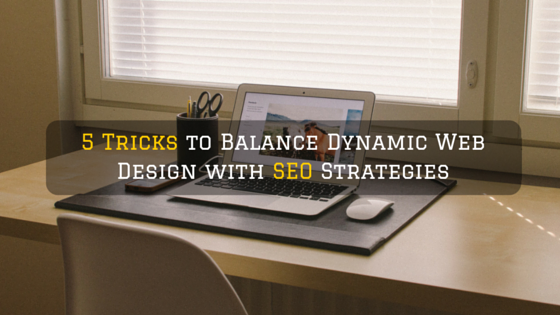Dynamic Web Design
A web design drafted by using server-based languages, like PHP, ASP, JSP and Coldfusion is termed as dynamic. For it, scripted codes are written to pull in files from the source databases. This way, a dynamic layout is configured. Once its structure is coded, diverse content can be added to it later. A well-defined content management system keeps it agile. It allows clients to trim the content anytime.
Having a dynamic web design is not enough. One must take SEO into stock. It implies the web should be designed complying search engine norms. It intends to make users happy. The given tricks to balance dynamic web with SEO strategies can help the users meet their requirements:
1. Mobile friendly: The penetration of mobile internet users in 2015 was recorded 52.7% as per statista.com. And the similar source projects its rise up to 63.4% in 2017. These figures indicate that internet access through mobiles have deeper penetration than that of desktop.
User-experience means a lot. If it is good, the return will be better. For example, if the view of the web content on mobile is too tiny to read and finding navigation buttons seems hard nut to crack, the website will fail to pitch. And inability to access plunges one to another site. It means an ecommerce website will harvest zero penny if it’s not mobile-friendly. No user will love to browse the site of whose content is not-so-visible. Thus, no or low online traffic rate never shoots up the website’s ranking in SERPs.
One must remember that the URLs should be similar to access through mobile and desktop. Otherwise, separate efforts will be put for appreciating ranking of the website. Do remember, redirecting pages perches the users to no way. As a result, no traffic will hit.
2. Infinite scrolling can be users’ choice: Scrolling fuels curiosity of the user to capture more. Consider an example of Amazon. A user searches a jacket. Since it has explosive number of choices, the user scrolls down until he/she meets the best choice. Google, itself, is its biggest example. If one searches an idea for a web design, it displays infinite designs. So, use brain while adding a scroll to the dynamic design of the web.
3. Exclude click-to-expand: Many websites don’t display full-fledge content. Its reason can be stuffing variable content with different headings.
For example, a website houses 10 to 15 headlines excluding banners, social networking navigators footer etc.. But as the user click to expand content, it takes time to open the page. So, the user thinks, “let I try on another website.” This thought will rise in every user who wants no hassles in browsing. From SEO’s point of view, it can be cast detrimental effect on its ranking.
4. Load generic and relevant images only: Images can be the best mean to convey a message. A relevant picture illustrates the content without description. Pinterest is its biggest example. Its visitors in the US touch 45.8% which is very good according to Alexa.com. To make it amicable to SEO strategies, an image should have:
• Descriptive file names
• Appropriate alt text
• Relevant description
5. Offer short-n-simple form: Consider a situation. The form design of an e-commerce website ‘A’ asks to fill queries on two pages. And website ‘B’ has just a few queries that end in one page. The visitors will surely escape the former one and register on the latter.
The example indicates that the long form irritates a user. Sometime, slow internet speed can also add to the users’ dilemma. As a result, the registering users will also move to another site. It will cast negative impact on its ranking which causes low ranking in search engine.


